Ah, the XA. Could this be the ultimate pocketable camera? On paper, it has it all — if by “all” you mean a compact camera with plenty of user control. Rangefinder focus? Check. Exposure control? Check. Self-timer? Check. Exposure compensation? Check. Superb lens? Check. But is the XA whole as great as the sum of its parts?
The Olympus XA is the mother of all “sliding clamshell” cameras. The Olympus Stylus Epic and Pentax Espio Mini are but two of many, many successors to utilize the same design. We have the fertile imagination of Yoshihisa Maitani to thank for this bit of cleverness, but maybe that shouldn’t be a surprise. After all, he’s the same designer who gave us such classics as the Olympus Pen and the OM series of SLRs. Even so, in many respects, the XA may well be Maitani’s crowning glory. Certainly, when it hit the market in 1979 it caused quite a stir, earning rave reviews in the photography magazines of the day.
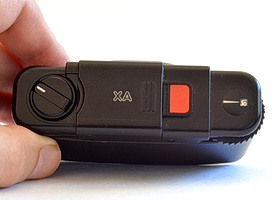
The XA’s top panel includes (from left to right), the film rewind crank, hair-trigger shutter release (red button), and exposure counter.
Most users cite the XA’s complex, 6-element/5-group, 35mm f/2.8 lens as being the camera’s best feature. And it is a very good lens — only wide open do you see softness creeping in from the corners. It’s also a non-folding design (unlike, say, the much touted Minox 35GL or popular Rollei 35), which means the camera is ready to go as soon as you slide the protective cover aside.
But to my way of thinking, a good lens is (or at least, should be) par for the course — it’s all the little details that express the depth of Maitani’s keen attention to the user experience. That’s why I just love the little 3-position switch on the underside of the XA. In its first click-stop position, you get +1.5 stops of exposure compensation. That’s cool. No need to fuss with the little ISO selector to get backlight compensation. The 2nd switch position is the battery check, which triggers an annoying high-pitched beep (that will delight your dog) and lights a red LED on the front of the camera if the batteries are okay. The 3rd and final position arms the self-timer. Now here’s the genius part of it. When the lever is in this position it’s at 90° to the camera body, so when you set the camera down on a flat surface, the switch serves as a stabilizing foot. How clever is that? Maybe I’m too easily impressed, but I really think that’s something.
So what’s it like to use an XA? In a word, fiddly. Most of the ergonomic issues arise from the camera’s diminutive size and simply can’t be avoided. Focusing is accomplished by moving a lever on the bottom front of the camera, which takes a bit of getting used to before your index finger naturally falls there. The ISO selector switch is tiny and best operated with a fingernail. (This is also why the exposure compensation switch is so very useful.) The shutter-release button is electronic and responds to the lightest touch. Again, not a problem once you’re used to it, but you can expect to have a few misfires along the road to familiarity.
None of the problems I’ve described seriously get in the way of picture taking, but they’re something to be mindful of if you’re coming to the XA from, say, a full-sized SLR. At the end of the day the XA’s best feature is that it’s a very capable shooter that really does slip easily into your pocket. It’s an excellent go-everywhere camera, especially if you want to have more control that what a typical point-and-shoot offers. It’s been said that the XA is the camera professional photographers take on vacation (or at least did so in the 1970/80s), and that really does sum it up quite well. I’ve gotten many great shots with my XA — some of which were purely opportunistic and that I would have missed if I hadn’t grabbed the camera “just in case…” And as a well worn cliché has it, the camera you have with you always takes better pictures than the one you left at home.
Did you find this article interesting or helpful? If so, consider using this link the next time you shop at Amazon.com. Better yet, bookmark it for future use. Thanks to Amazon’s associates program, doing so costs you nothing yet helps keep this site up and running. Thanks!
For more of my camera reviews, click here.

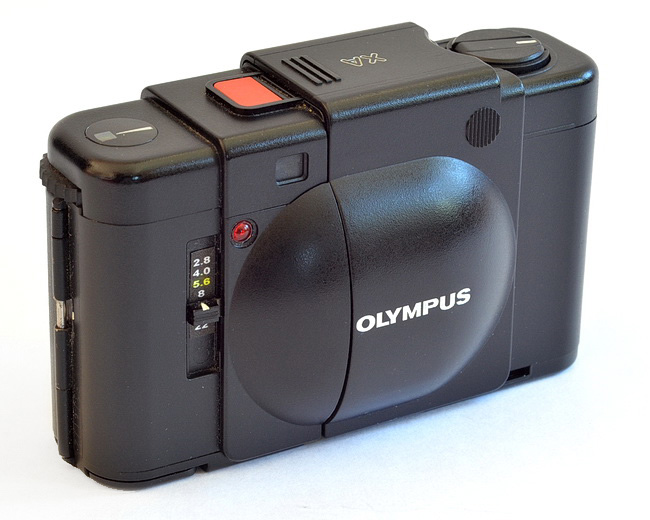
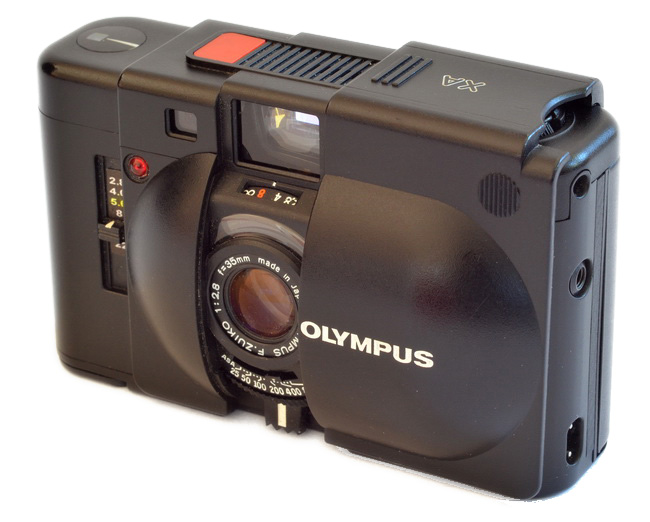
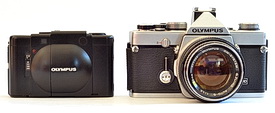
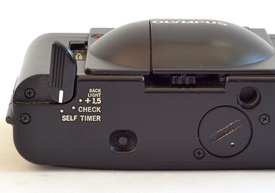



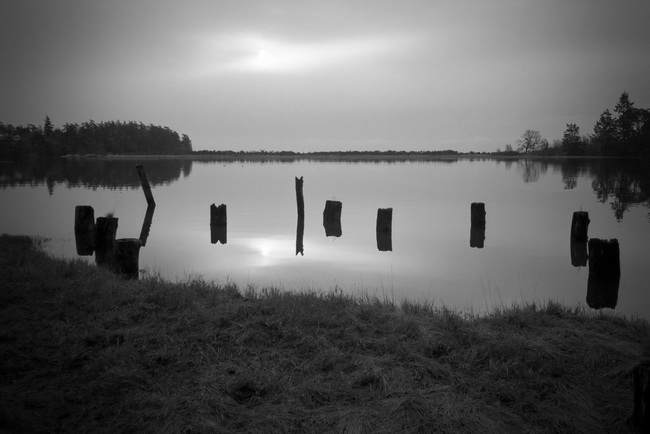
 Subscribe with RSS
Subscribe with RSS
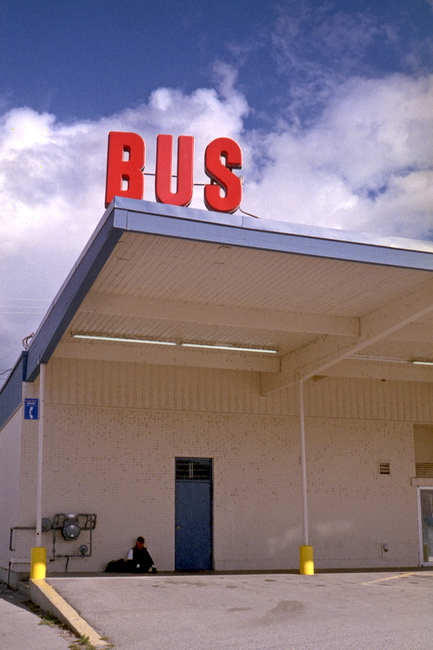



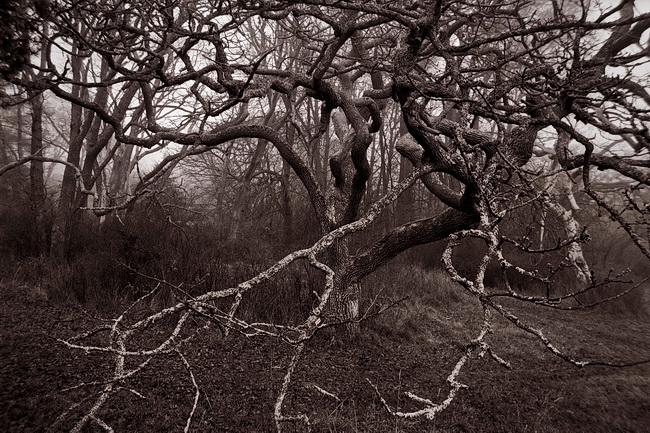

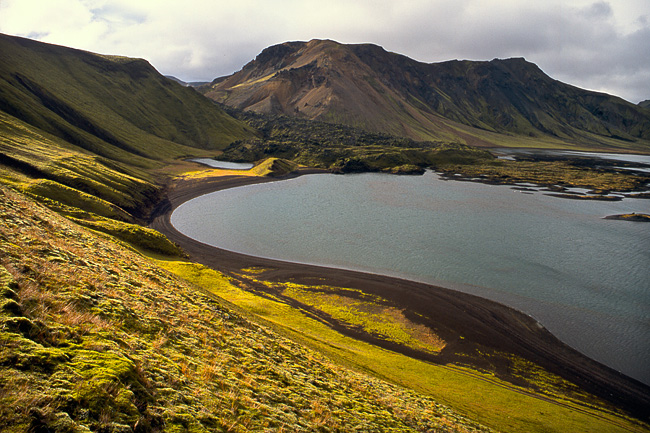


You summed it up excellently – not much more to add.
I regard the shutter release as a good feature it helps a lot to avoid shake when using the camera in low light conditions so that using slow times (1/30th or even 1/15th) is possible hand held with a little experience.
Often the missing filter thread is mentioned but I think it is missing by purpose – just imagine a srewed in filter you forget about and then closing the slider.
It’s great little camera IMHO.
A really nicely written summary. Great pics too. Thanks! I’m inspired to load up my XA and take it to work tomorrow.
Cheers
Hey gary
Great little review of the XA, and some fine pics, especially of the blue storefront.
I’ve got a couple of XAs myself and they’re fine little cameras… really enjoying cross-processing old Precisa slide through mine at the moment.
http://zorkiphoto.co.uk/2013/04/13/olympus-xa-camera-review/
Cheers
S
Thanks Stephen — I enjoyed reading your review as well!
Best compact 35mm ever! I love my XA.
Good summary of a brilliant little camera. I used it for years (and it’s still around here somewhere!), often as a second back-up camera when traveling. I really think it was the best of the mine 35mm cameras, among the others from Rollei and Minox. In addition to its great lens, it was tough and versatile.
One little feature that not many people know about is its ability to take long auto night exposures. Set it up on a rock or a tripod, click the shutter button and it will close when it’s had enough light.
Love the vines on the blue wall photo. Showing that the camera with u is the one that takes the great photos!
Brian, great little feature that u mentioned too. Makes the XA even more impressive.
I will never go anywhere without mine forever. After this, why would I? The Clamshell King!